
How to Use 6A AC BREAKER: Examples, Pinouts, and Specs
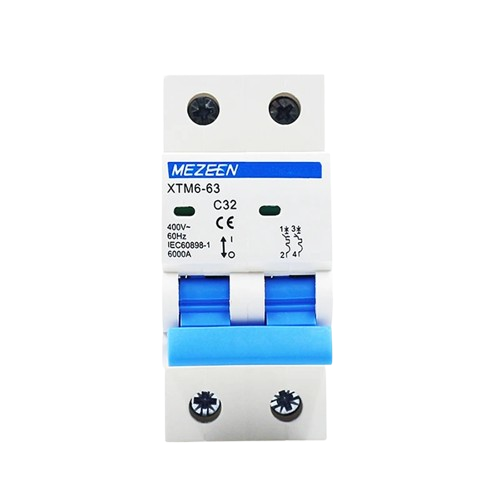
 Design with 6A AC BREAKER in Cirkit Designer
Design with 6A AC BREAKER in Cirkit DesignerIntroduction
The 6A AC Breaker (Manufacturer: AC, Part ID: BREAKER) is a protective device designed to safeguard electrical circuits by automatically interrupting the flow of current in the event of an overload or short circuit. This ensures the safety of connected devices and prevents potential damage to the circuit.
Explore Projects Built with 6A AC BREAKER
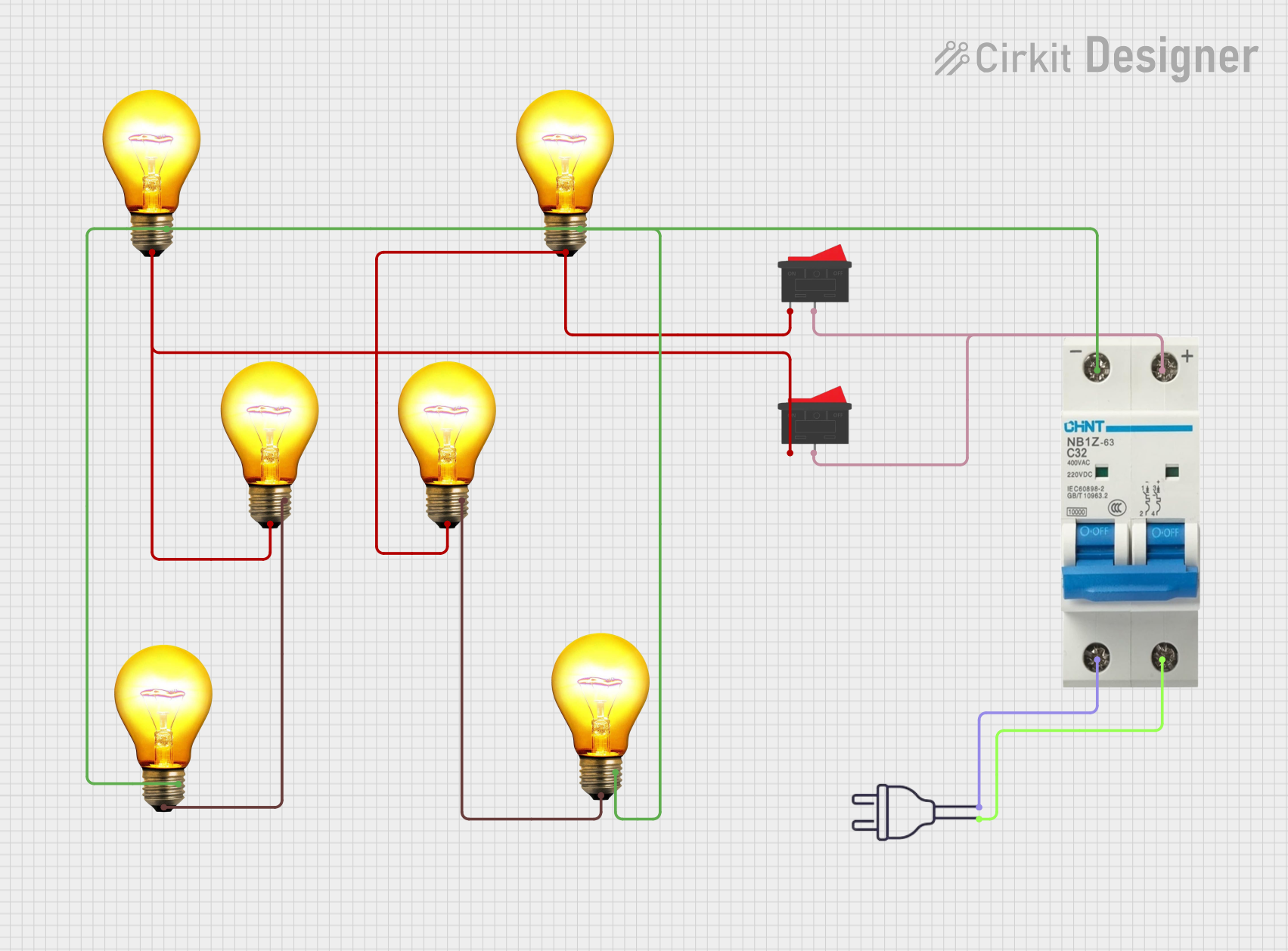
 Open Project in Cirkit Designer
Open Project in Cirkit Designer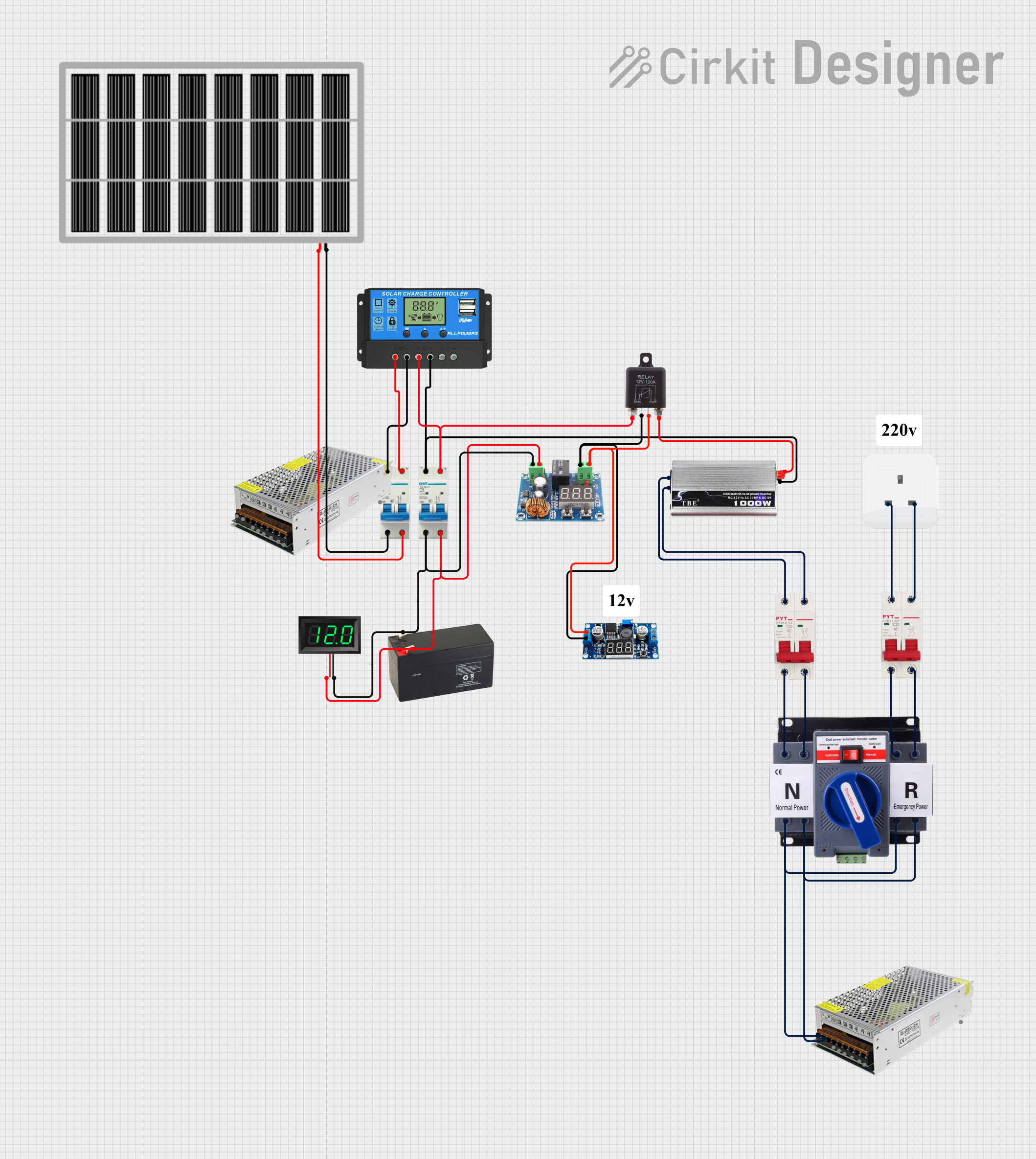
 Open Project in Cirkit Designer
Open Project in Cirkit Designer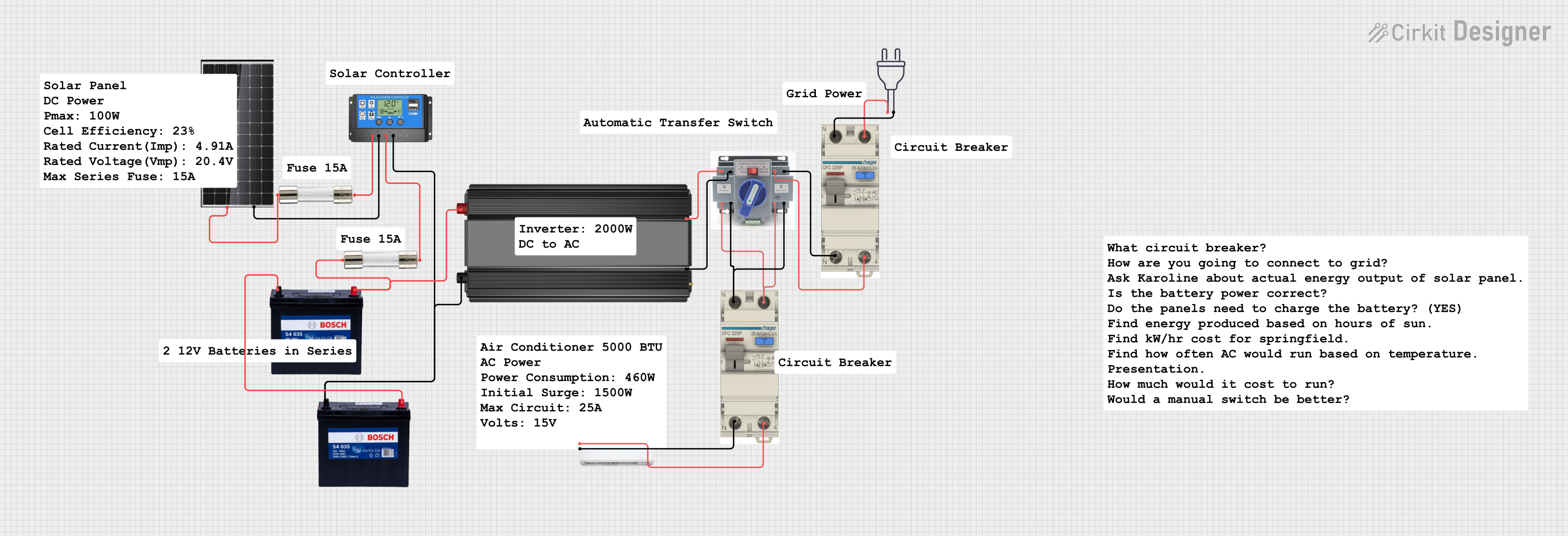
 Open Project in Cirkit Designer
Open Project in Cirkit Designer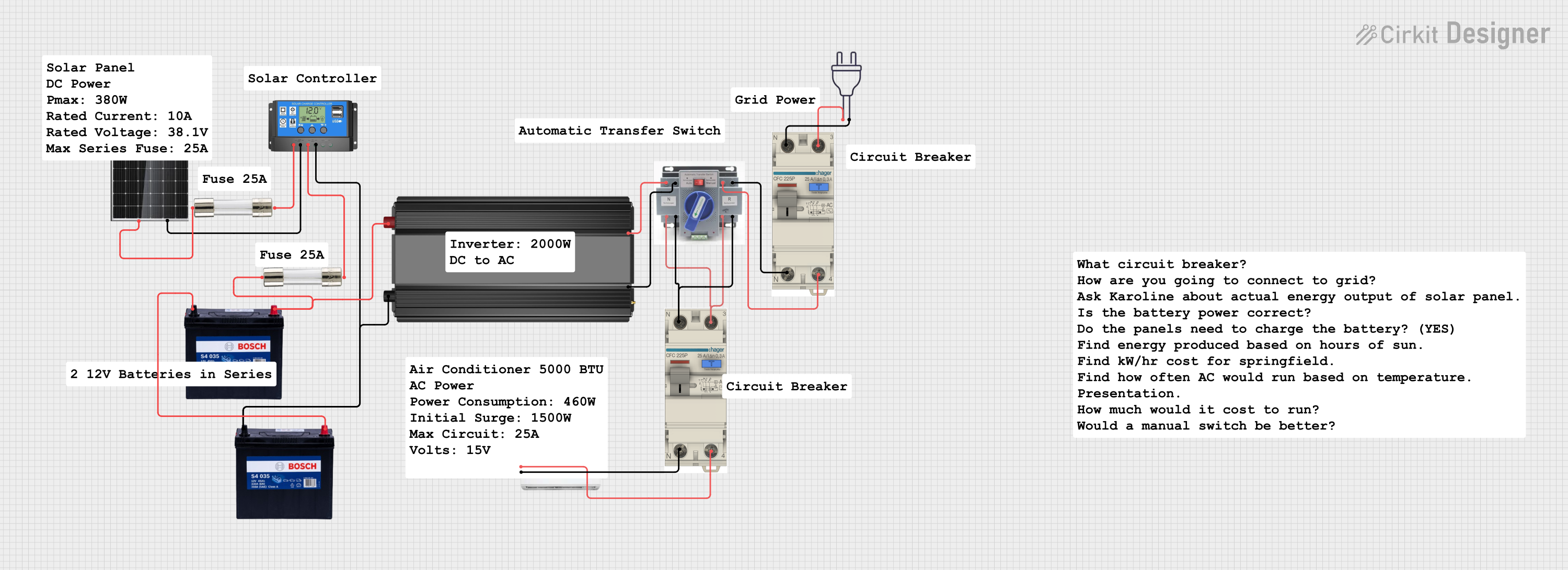
 Open Project in Cirkit Designer
Open Project in Cirkit DesignerExplore Projects Built with 6A AC BREAKER

 Open Project in Cirkit Designer
Open Project in Cirkit Designer
 Open Project in Cirkit Designer
Open Project in Cirkit Designer
 Open Project in Cirkit Designer
Open Project in Cirkit Designer
 Open Project in Cirkit Designer
Open Project in Cirkit DesignerCommon Applications and Use Cases
- Residential and commercial electrical systems for circuit protection.
- Industrial equipment to prevent damage from overcurrent conditions.
- Electrical panels and distribution boards.
- Protection of sensitive devices such as motors, transformers, and appliances.
Technical Specifications
The following table outlines the key technical details of the 6A AC Breaker:
| Parameter | Value |
|---|---|
| Rated Current | 6A |
| Rated Voltage | 230V AC (single-phase) |
| Breaking Capacity | 6kA |
| Frequency | 50/60 Hz |
| Trip Mechanism | Thermal-Magnetic |
| Operating Temperature | -5°C to 40°C |
| Mounting Type | DIN Rail |
| Dimensions | 18mm width (standard module) |
| Compliance Standards | IEC 60898-1 |
Pin Configuration and Descriptions
The 6A AC Breaker does not have traditional pins but instead features terminal connections for input and output. The table below describes these terminals:
| Terminal | Description |
|---|---|
| Line (Input) | Connects to the incoming live wire from the power source. |
| Load (Output) | Connects to the outgoing live wire to the protected circuit. |
| Neutral | Connects to the neutral wire (if applicable). |
Usage Instructions
How to Use the 6A AC Breaker in a Circuit
Mounting the Breaker:
- Install the breaker on a standard DIN rail in the distribution box or panel.
- Ensure the breaker is securely locked into place.
Wiring the Breaker:
- Connect the Line (Input) terminal to the live wire from the power source.
- Connect the Load (Output) terminal to the live wire leading to the circuit or device to be protected.
- If required, connect the neutral wire to the Neutral terminal.
Testing the Breaker:
- After installation, switch on the breaker and verify that the circuit is functioning correctly.
- Use the test button (if available) to ensure the breaker trips as expected.
Resetting the Breaker:
- In the event of a trip, identify and resolve the cause of the overload or short circuit.
- Flip the breaker switch to the "OFF" position, then back to the "ON" position to reset it.
Important Considerations and Best Practices
- Ensure the breaker’s rated current (6A) matches the requirements of the circuit to avoid nuisance tripping or insufficient protection.
- Do not exceed the rated voltage (230V AC) or breaking capacity (6kA).
- Regularly inspect the breaker for signs of wear, damage, or loose connections.
- Avoid using the breaker in environments with extreme temperatures or high humidity without proper enclosures.
Arduino Integration
While the 6A AC Breaker is not directly interfaced with microcontrollers like the Arduino UNO, it can be used in conjunction with relays or current sensors to monitor and control AC circuits. Below is an example of how to use an Arduino to monitor the status of a circuit protected by the breaker:
/*
Arduino Code to Monitor the Status of a 6A AC Breaker
This code uses a digital input pin to detect whether the breaker is ON or OFF.
A relay or current sensor can be used to provide the status signal to the Arduino.
*/
const int breakerStatusPin = 2; // Pin connected to the breaker status signal
const int ledPin = 13; // Built-in LED to indicate breaker status
void setup() {
pinMode(breakerStatusPin, INPUT); // Set the breaker status pin as input
pinMode(ledPin, OUTPUT); // Set the LED pin as output
Serial.begin(9600); // Initialize serial communication
}
void loop() {
int breakerStatus = digitalRead(breakerStatusPin); // Read the breaker status
if (breakerStatus == HIGH) {
// Breaker is ON
digitalWrite(ledPin, HIGH); // Turn on the LED
Serial.println("Breaker is ON. Circuit is active.");
} else {
// Breaker is OFF
digitalWrite(ledPin, LOW); // Turn off the LED
Serial.println("Breaker is OFF. Circuit is inactive.");
}
delay(500); // Wait for 500ms before checking again
}
Troubleshooting and FAQs
Common Issues and Solutions
| Issue | Possible Cause | Solution |
|---|---|---|
| Breaker trips frequently | Overload or short circuit in the circuit. | Check the connected devices and wiring for faults. |
| Breaker does not trip during a fault | Faulty breaker or incorrect installation. | Replace the breaker or verify proper wiring. |
| Breaker cannot be reset | Persistent fault in the circuit. | Identify and resolve the fault before resetting. |
| Breaker feels hot during operation | Overloading or poor ventilation. | Reduce the load or improve ventilation around the breaker. |
FAQs
Can I use the 6A AC Breaker for DC circuits?
No, this breaker is designed specifically for AC circuits. Using it in DC circuits may result in improper operation or damage.What happens if I exceed the rated current of 6A?
The breaker will trip to protect the circuit. Repeated overloading may reduce the lifespan of the breaker.How often should I test the breaker?
It is recommended to test the breaker at least once a year using the test button (if available) to ensure proper functionality.Can I use this breaker outdoors?
The breaker must be installed in a weatherproof enclosure if used outdoors to protect it from moisture and environmental factors.